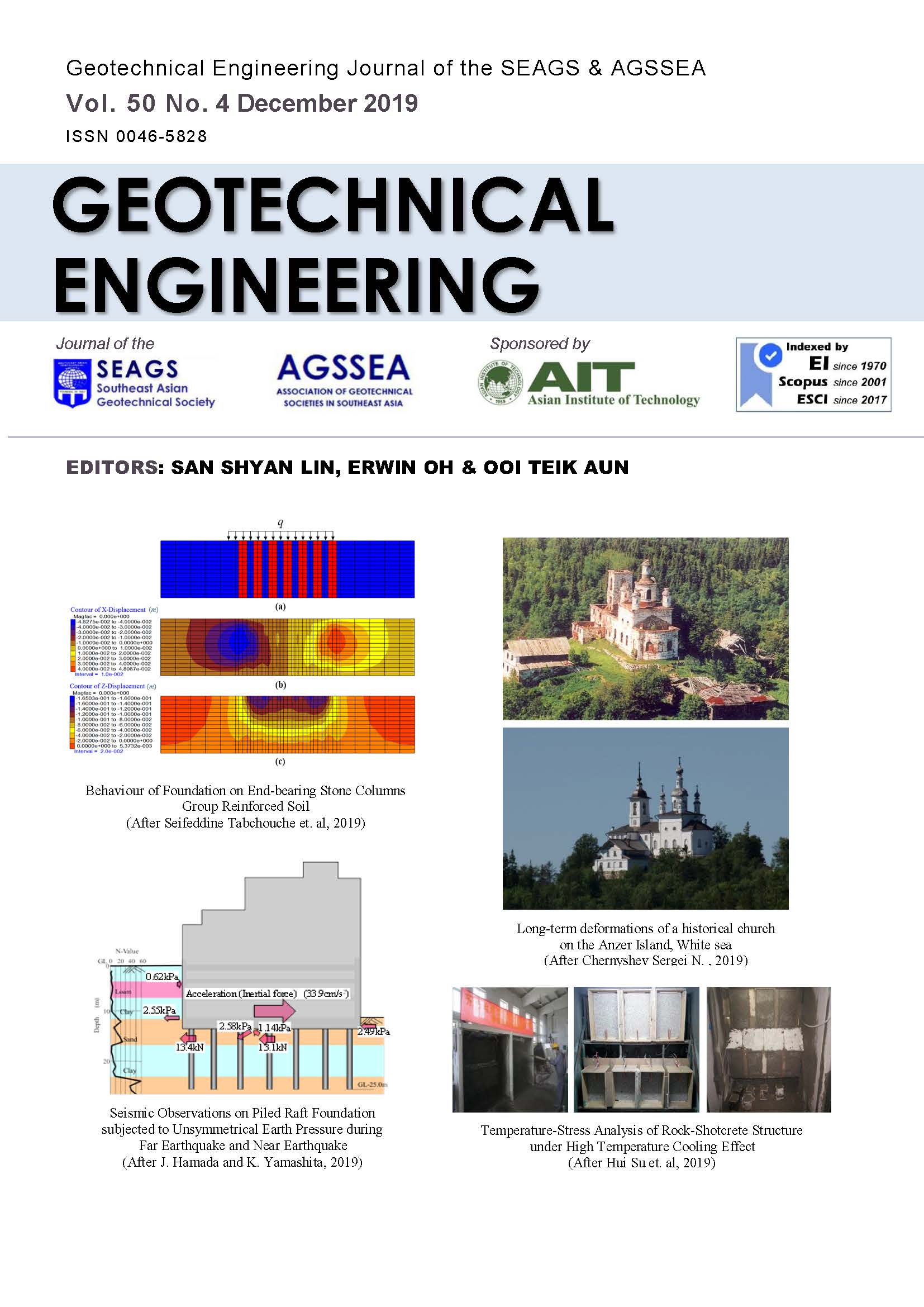Application of Electrical Resistivity Imaging and Slope Modelling in the Investigation of Landslide Sliding Geometry in Phuket
Main Article Content
Abstract
Over the last decade, landslides triggered by rainfall in Phuket have been a major problem affecting development and tourism. An investigation of areas susceptible to landslides is necessary in order to institute policies to reduce the impact of landslide and to ensure the safety of tourists. In this study, two-dimensional electrical resistivity imaging (2D-ERI) was applied and slope stability modelling was conducted to investigate the sliding surface and the thickness of the sliding mass in a study area which is prone to landslide during intense and prolonged rainfall. The result of the 2D-ERI was used to validate the result of a simulation of the slope stability to determine the landslide sliding surface and the thickness of the sliding mass based on rising piezometric head due to rainfall. Further, the model geometry of the slope stability was reconstructed using the 2D-ERI data, and the simulation was repeated. The result for the factor of safety (FS) when the piezometric head was rising was found to have been overestimated in the original simulation Therefore, the reconstruction of the model geometry is essential to avoid the over-estimation of the FS in slope stability modelling in conditions of rising piezometric head.
Article Details

This work is licensed under a Creative Commons Attribution-NonCommercial-NoDerivatives 4.0 International License.
Copyright © 2019 Association of Geotechnical Societies in Southeast Asia (AGSSEA) - Southeast Asian Geotechnical Society (SEAGS).


